The introduction of the worldwide web not only fundamentally changed the travel experience, it also turned an entire industry on its head as new brands emerged to take advantage of it, while many existing players were left struggling to keep up with a blistering rate of change. As increasingly empowered and connected consumers have demanded more from their travel providers, what have been the most important developments over the past 25 years?
1989
In March, British computer scientist Tim Berners-Lee wrote a proposal for what would eventually become the World Wide Web. For a bit of fun, visit the Wayback Machine to see how some of the early brands looked when they first appeared online.
1994
Similar to the Yahoo listing-style of the time, Travelweb.com emerged as the first comprehensive catalogue of hotel properties around the world and, a short time later, included a component to make bookings. The site was created by a relatively small team under The Hotel Industry Switch Company's (THISCO) John Davis, a key figure in the history of online travel, who formed one of the industry's major reservation technology providers, Pegasus. The site was conceived primarily as a showcase for what the company did behind the scenes, but its uniqueness made it popular with many early visitors to the web. Davis left Pegasus in 2008 and is now CEO of RoomKey, a multi-hotel chain-backed search engine.
US travel writer Jeff Greenwald triggered what has since evolved to become a cottage industry for dreamers, travellers and countless others the world over: travel blogging. He posted a 1,600-word article called One Hundred Seconds of Solitude on behalf of Global Network Navigator, the first commercial web publication, from a tourist bureau in Mexico.
1995
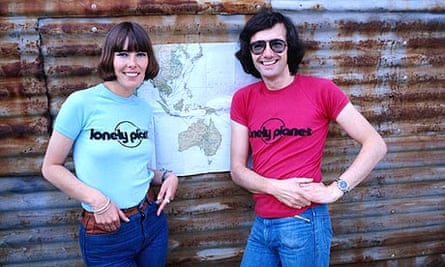
A basement business in Palo Alto, California, known as Internet Travel Network (ITN), laid claim to having overseen the first airline ticket booking made over the web, for a flight from San Francisco to Las Vegas. ITN was the forerunner of GetThere, a company which later sold to airfares distribution provider Sabre – a path trodden by many of the pioneers at the time, who were quickly snapped up by those powering much of the non-web technology around in the industry. In GetThere's case, it was for a cool $757m in 2000.
Viator Systems (now Viator) launched a travel technology business to help provide bookings for destination tours and excursions via the web. Twenty years on, this incredibly fragmented part of the industry still lags behind its air, hotel and car hire cousins.
To some extent, Lonely Planet was the major gatekeeper of the written word when it came to travel guides prior to the web. But it soon realised that if it was to capitalise on the emergence of the internet, it had to get online quickly. The web may not have democratised the selling of travel, but it certainly levelled the playing field when it came to accessing travel information – with big brands no longer having control over audiences via travel agent brochures or advertising campaigns. Lonely Planet's reasonably successful expansion to the web inspired hundreds, perhaps even thousands, of similar travel guide brands to appear online, each promising unique advice and, of course, tips on discovering "untouched places".
1996
Microsoft, the most high-profile technology company on the planet at the time, realised there was probably something in this early momentum and unveiled its attempt at an online travel agency, known as Expedia. The rest is history. The site set the pace for countless imitators and now has myriad sister brands in both the leisure and corporate travel industry.
Two Stanford University students, Larry Page and Sergy Brin, started examining the rest of the web to find a way to index pages based on popularity with other users and websites. The result was Google. A relatively slow burn in its early stages, Page and Brin's creation eventually swept aside almost all other search engines and became the first place that online consumers went to. As a result, travel providers spend billions to advertise alongside the search results. It was the beginning of a love-hate relationship with the industry that continues to this day.
Inspired in part by US carrier Southwest, easyJet and Ryanair changed the European airline industry forever with their take on the low-cost airline model – cheap, cheerful, expansive and ambitious. "Book on our website" started to replace "Book through your local travel agent".
1998
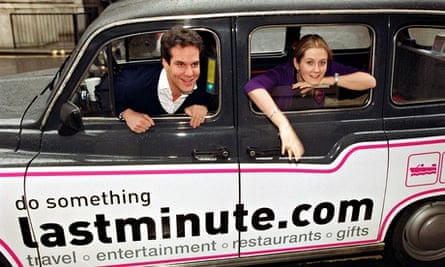
As online travel agencies took root in the US, in Europe two bright young things created an iconic web brand. Brent Hoberman and Martha Lane Fox led the brash and playful Lastminute.com into the still somewhat new world of web commerce, cementing the idea in the minds of consumers that travel can be bought over the internet with ease and, well, at the last minute. A listing on the London Stock Exchange and a busy period buying countless other brands eventually led to US counterpart Travelocity (owned by Sabre) buying it in 2005 in a deal which valued the company at almost £600m.
1999
US site FareChase appeared on the scene with a different slant on the online travel shopping experience, spawning countless other (and more successful) brands in the years to come. Known as metasearch in the industry, FareChase was a simple travel search engine which collected fares from booking sites (agencies, airlines, hotels). It was later bought by Yahoo and laid the groundwork for the likes of Sidestep, Kayak, TravelSupermarket, Skyscanner to follow.
2000
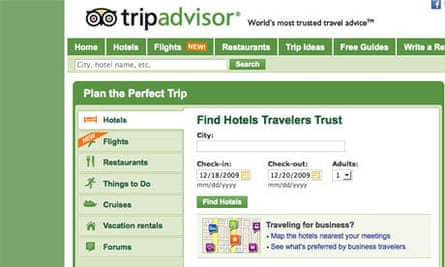
Not many could have guessed a business located above a pizza parlour in Massachusetts would eventually become one of the most popular travel websites in the world, not to mention the most disruptive influence on the hotel industry ever created. TripAdvisor, the original and still by far the biggest social travel site on the web, was incredibly simple – travellers left reviews of hotels; fellow travellers found the reviews and could make a decision on whether to stay at a property based on what they'd read. Hoteliers freaked out, but travellers loved this new "wisdom of the crowds".
2001
Many travel figures now point to the 9/11 tragedy as a pivotal moment in the history of online travel. As the industry evaluated how it would deal with new security measures and cope with a downturn in both leisure and business trips, web brands became the marketplaces for air and hotel suppliers trying to offload huge amounts of unfilled inventory – a strategy that has pretty much continued to this day. It seems remarkable now, but airlines in particular discovered the web was the easiest and most expansive way of communicating with confused and nervous passengers.
2004
Priceline, the US online travel agency which formed with the "Name Your Own Price" idea in the late 1990s, began its gradual surge to global dominance with the purchase of Active Hotels and then, in 2005, Booking.com. The two acquisitions spearheaded an international and renewed focus on hotel bookings for Priceline and ensured the over-arching Booking.com website became the envy of the industry and is now one of the most widely known brands on the web.
A plaything of Harvard student Mark Zuckerberg that quickly became a fully baked business, the launch of Facebook heralded the beginning of a new concept in the online travel experience: sharing. Travellers turned to Facebook (and later Twitter, FourSquare, Pinterest, Instagram et al) as a platform to, let's face it, show off to their "friends" where they had been or were planning to go on holiday. Most consumer-facing travel companies now have a presence on at least one of these networks, allowing them to interact with customers and – still in its relative infancy – make bookings
2007
Though not directly responsible for the evolution of online travel, the launch of the Apple iPhone – giving the users access to the web via their handsets – had a huge influence on what became the start of travel services on mobile devices. Its apparent coolness, like that of the iPod a few years earlier, ensured that the mobile web became accessible to the masses. The corresponding App Store also triggered the creation of a mind-bending number of travel-related applications.
2008
AirBedAndBreakfast (which soon changed its name to Airbnb) quickly became a darling of the second wave of travel brands hitting the web in the late 2000s. The idea of creating a virtual marketplace where property or house owners could share their space for short-term rents struck a chord with a new breed of travellers looking for a different way of seeing in a destination.
2009
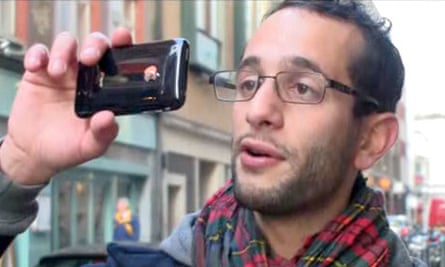
Thinking of imaginative ways to combine Twitter with travel wasn't lost on the good folk of this particular publication, with writer Benji Lanyado going to Paris on what became the first of a series of TwiTrips around Europe and the US. Lanyado was taken on a guided tour of the French capital using only recommendations from his followers on Twitter. For the industry at large, it was another demonstration of how powerful "real-time" communication was becoming.
2010
After taking the travel industry's advertising dollars for over a decade, Google ramped up its interest in the travel industry with the $700m acquisition of airfare search technology company ITA Software. The deal signalled the start of a debate which is still raging: can it be a provider of independent search results, sell keyword adverts and have its own travel services, and led to the launch of search tools for flights and hotels, plus the acquisition of respective travel and review services, Frommer's and Zagat.
2011
Few modern travel businesses are more of a time and a place than HotelTonight, which hit the ground running in early 2011 with a mobile app that allowed users to find a vacant room in a city for the same day and have it booked at the touch of a button on the device.
2012
KLM may be just another very large global airline, but when it comes to social media and commerce it has arguably pushed the boundaries more than any other carrier. It reached a peak of sorts in 2012 when it started Meet & Seat, a way to select where you sit on a flight based on the social profiles (LinkedIn or Facebook) of fellow passengers.
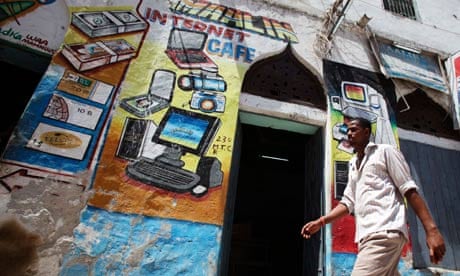
Comments (…)
Sign in or create your Guardian account to join the discussion